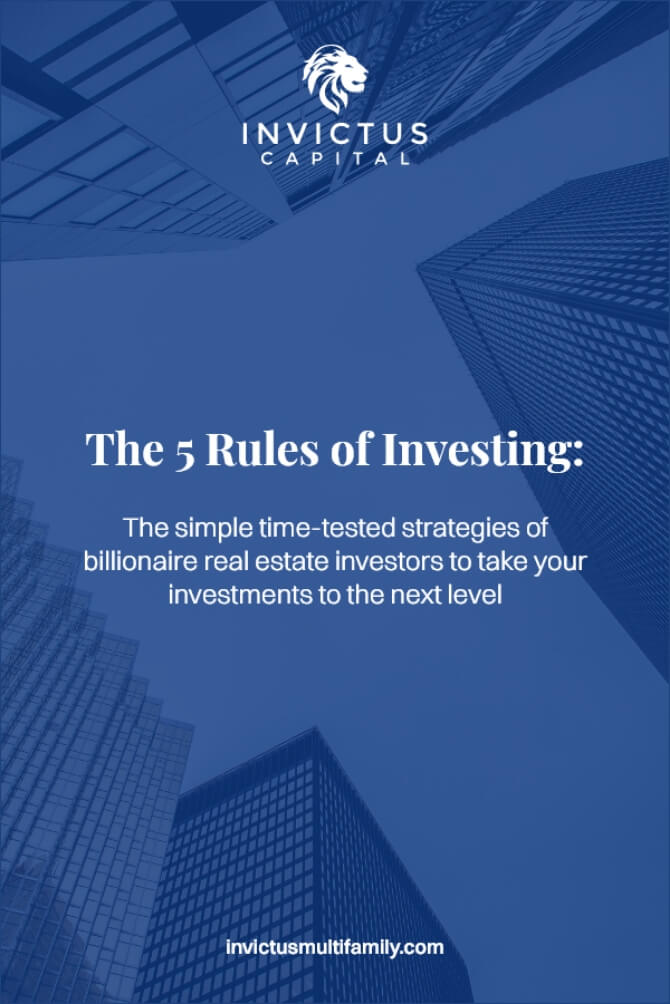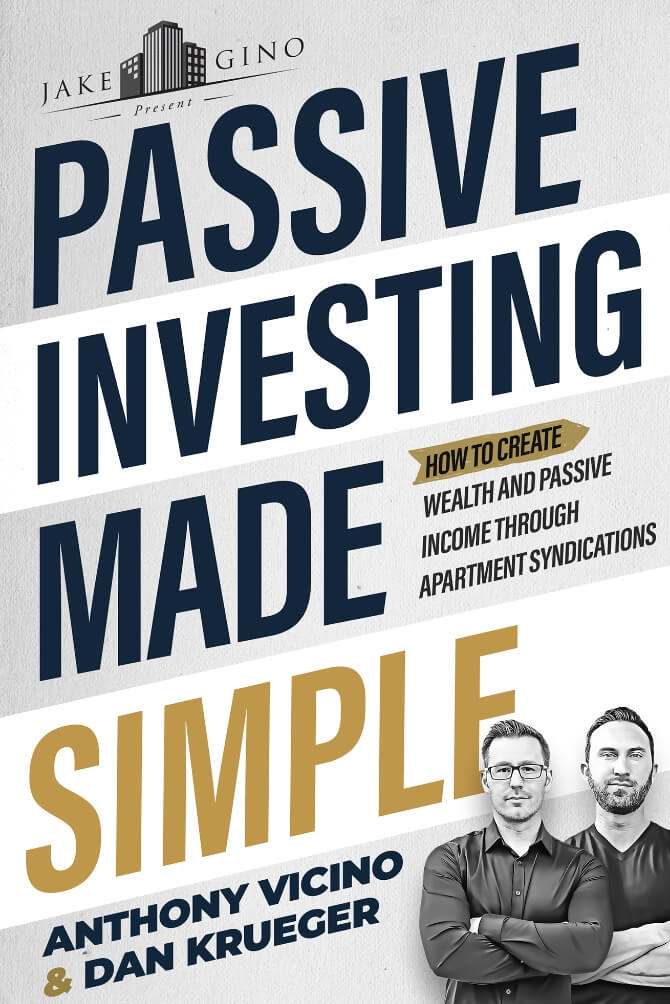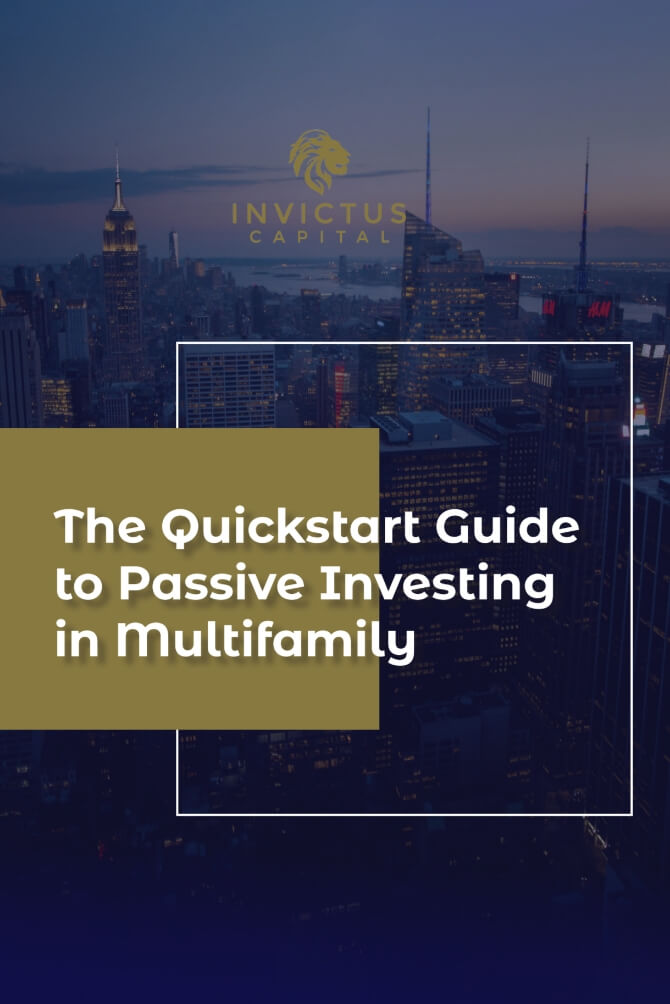For today’s episode, we will be discussing a very simple concept that comes up often when talking passive investors and how you get cash flow distribution from value add multifamily operators.
We will go what cash flow distribution is and why it is so surprising when first learning about it.
What we can do to understand how the leftovers of operating profits are distributed.
We will talk about these things…and more in another episode of Multifamily Investing Made Simple in under 10 minutes.
Tweetable Quotes:
“if there’s a preferred return on the project, say, of seven percent, then the way that we structure it and a lot of operators do is at that preferred return just carries over into the next year.” – Anthony Vicino
“9 out of 10, if not 9.9 out of 10, the tax liability on real estate syndication is going to be less than if they dump their money into the stocks.” – Dan Krueger
“I think a lot of people are coming into the investing space with more of an equity appreciation assumption about what they’re going to be getting out of it. And they’re surprised to find out that they actually get a paycheck every quarter.” – Dan Krueger
LEAVE A REVIEW if you liked this episode!!
Keep up with the podcast! Follow us on Apple, Stitcher, Google, and other podcast streaming platforms.
To learn more, visit us at https://invictusmultifamily.com/
**Want to learn more about investing with us?**
We’d love to learn more about you and your investment goals. Please fill out this form and let’s schedule a call: https://invictusmultifamily.com/contact/
**Let’s Connect On Social Media!**
LinkedIn: https://www.linkedin.com/company/11681388/admin/
Facebook: https://www.facebook.com/invictuscapitalventures/
YouTube: https://bit.ly/2Lc0ctX

Cashflow Distributions In Under 10 Minutes
Anthony Vicino: [00:00:14] Hello and welcome to multifamily investing made simple in Under Ten Minutes, this is the podcast where we take the complexity out of real estate investing so that you can take action today and today with a very simple concept that comes up surprisingly often when we’re talking to new passive investors. Now, if you’ve listened to our episodes before, you understand that we are value add multifamily operators. So we like to buy assets that are already performing from day one. They’re already generating positive cash flow. And we go into these assets and we make improvements to increase their valuation. And so we’re getting the best of all worlds. And one of the things that surprise people during this whole process is that these are assets that continue to perform throughout the renovations. So from day one, when we purchase an asset, it’s delivering cash flow distributions. So, Dan, what is a cash flow distribution and why is it so cool and why is it also so surprising when passive investors first learn about it?
Dan Kreuger: [00:01:17] Yeah, I think a lot of people coming into the multifamily investing space are coming from either just having experience in the stock market or maybe if they got into real estate, it was like a flip or maybe like a single family home or something like that, where really the payoff was at the end on a flip property purchased. No one’s in there. There’s rehab going on and then sold. And so it was basically just an equity play. And, you know, the same with other investments like the stock market. You put your money in and then you hope that the value increases over time so that you can appreciate that when you sell it. So I think a lot of people are coming into the investing space with more of an equity appreciation assumption about what they’re going to be getting out of it. And they’re surprised to find out that they actually get a paycheck every quarter. Not everyone does accordingly, sometimes annually, sometimes monthly. But this is much more like you’re buying an operating business, which you are, and you’re getting your share of the profits on a quarterly basis.
Dan Kreuger: [00:02:19] So let’s say we buy a property in January. By the end of March, that first quarter’s over and we’re sending out the first cash flow distributions to investors within the first two weeks of April. And all that is, is that’s the revenue collected from the property, rent, parking, laundry, any other revenue line items. All add all that up, subtract out the operating expenses like utilities and insurance, property management, and repairs. And then obviously your your mortgage payment, whatever’s leftover is the operating profit for that period. And so the way our deals work is that money gets just divided up pro-rata amongst the investors and sent to them in an on a quarterly basis. So, well, their equity in the property is increasing through that value add business plan that’s being executed. They’re also getting a paycheck, which is great. And I think a lot of people are caught off guard by that in a good way because they’re used to just putting their money away and waiting for it to grow and not having a paycheck come in.
Anthony Vicino: [00:03:17] Now, we should be very clear here. This is how we structure our deals at Invictus. This isn’t necessarily how every Value-Add deal is going to be structured. Some operators don’t start distributing cash flow until after one year. Depends on the level of renovations going into a project that’s going to be a large part of it. But for us, we look for assets that are cash flowing from day one. That’s one of the criteria we really like because it signals a very healthy, stable investment opportunity. And that’s something that we helps us sleep better at night, knowing that the asset is already performing up to a minimum standard, that it’s not going to set the world on fire in the first year of a deal. The cash flow distributions might only be five or six percent. But if there’s a preferred return on the project, say, of seven percent, then the way that we structure it and a lot of operators do is at that preferred return just carries over into the next year. So if we only deliver five percent of cash flow in year one, then that means you’re owed another two percent in year two. So year two, you’re getting nine percent cash flow and so you’re caught back up. And so all this is to say cash flow distributions, they’re a fantastic thing because let’s say you want to offset your W-2 income. Well, that’s not going to be very helpful if all you’re doing is living between big capital event to next capital event. So a big reify to another sale. The cash flow distributions are quarterly income that you can actually live off of. You could reinvest it. You can do all sorts of things with it. But one of the really beautiful things, Dan, that we haven’t even touched on, and this is where we’re going to do our disclaimer and give a little asterisk Mark here and just let everybody know we’re not tax advisors. We don’t pretend to be we don’t play one on TV. Well, I don’t think you do. At least
Dan Kreuger: [00:04:56] Not yet.
Anthony Vicino: [00:04:57] Not yet. I like it. He’s got his ambitions, his goals
Dan Kreuger: [00:05:00] Go to Hollywood.
Anthony Vicino: [00:05:02] But one of the really cool things about flow distributions is that because of how these assets are depreciated, it’s quite often the case that you’re not going to be paying taxes. On your cash flow distributions in the year that you receive now. At some point, you’re going to have to pay your taxes. Uncle Sam always comes, comes knocking. You can’t you come out forever. But in the meantime, until that day comes, you can usually offset that taxable liability for a good little while. So you can use those cash flow distributions for all sorts of things in the meantime.
Dan Kreuger: [00:05:35] Yeah, it’s a really powerful vehicle. And there’s a lot of people that get into this asset class specifically for that reason. And even if you’re not washing your cash or I’m sorry, your tax liability out to zero, the effective tax rate for everybody is going to be less than it would be in most alternative investments. For example, the stock market, no matter what the depreciation schedule is and how that shakes out for each individual investor, nine times out of 10, if not nine point nine times out of ten, the tax liability on real estate syndication is going to be less than if they dump their money into the stock. So.
Anthony Vicino: [00:06:09] Yeah, but I want to own a piece of Elon.
Dan Kreuger: [00:06:12] Now, that testimony about what everyone
Anthony Vicino: [00:06:17] Won’t buy that stock, it’s going to go to the moon. I can feel it now. No, I don’t speculate. I’m an investor. And so we we practice disciplined underwriting practices. Right. That that’s what we do. Exactly.
Dan Kreuger: [00:06:32] That’s what everybody does. Right.
Anthony Vicino: [00:06:33] And and to a degree. So that is going to do it for a cash flow distributions. It’s not a big topic. It’s not a hard one to understand by any means. But it’s always surprising to us because we talked to a lot of passive investors every week and this one comes up pretty frequently. People go, Oh. I’m getting cash flow, that’s cool, so hopefully that answers any questions that you had about the topic and we will catch you guys next week.


